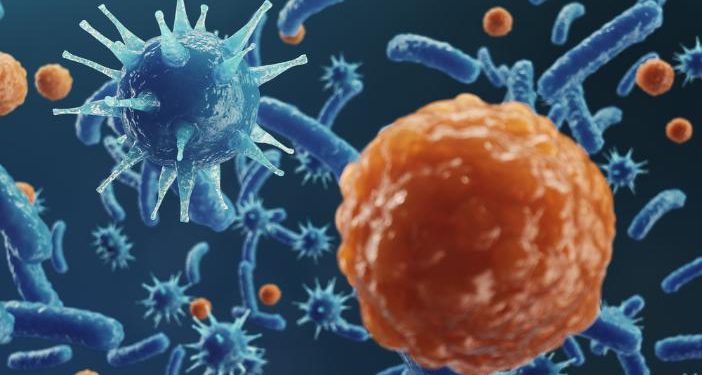Any cancer diagnosis is scary, but leukemia can be especially challenging. Your outcome depends on many factors, including the type and how fast the cancer cells are growing.
Doctors don’t know what causes most types of leukemia. But they do know that the DNA of blood-forming cells changes (mutates). The mutations keep healthy white blood cells, red blood cells and platelets from doing their jobs.
Symptoms
There are many kinds of leukemia, and symptoms can be different depending on what kind you have. It also depends on whether the cancer cells are growing quickly or slowly, and which blood stem cells they are crowding out. Some leukemias grow faster and are called acute leukemias, while others grow slower and are called chronic leukemias. Symptoms can also be affected by the age of the person and which organs are involved.
In general, leukemia causes a shortage of normal blood cells. These cells are needed to fight infections and help other blood tissues do their work. Without enough of these normal blood cells, you might feel tired or run down. You may also have problems with your bones or liver, and you might bruise easily or get enlarged lymph nodes (glands that are found in the neck, armpits, groin area, and belly). If you have leukemia, you may not notice any symptoms early on. But if you have more than one symptom that lasts a long time or gets worse, talk to your doctor.
The first step to find out if you have leukemia is a blood test. Your doctor can take a sample of your blood to look for certain kinds of blood cells, such as white blood cells, which help fight infections. Your doctor can also look at the blood sample to see if it is full of abnormal cells.
You might need other tests to find out if you have leukemia. These might include a bone marrow aspiration or biopsy, in which a small amount of fluid or solid tissue is taken from the center of some bones (usually the hip bones) to check for cancer cells. You might have a lumbar puncture, in which a needle is put into the lower back near the spinal cord to collect a sample of the fluid that surrounds the brain and spine.
You might also have a chest X-ray and a CT scan of the abdomen or pelvis to look for enlarged lymph nodes in your groin, chest, and belly. You might have a special test to measure the levels of certain chemicals in your body that can be used as markers of certain diseases, including some types of leukemia.
Diagnosis
Leukemia is a cancer that affects your blood cells. It usually starts in your bone marrow, the soft spongy tissue inside some of your bones where blood cells are made. Your bone marrow makes red blood cells, white blood cells and platelets. When you have leukemia, your bone marrow makes too many immature blood cells. These abnormal cells can’t carry out their normal jobs, so you don’t have enough healthy red blood cells to supply oxygen to your body and organs or enough healthy white blood cells to fight infections.
A doctor can diagnose leukemia by doing a complete blood count and other blood tests. This can check for abnormal cells and find out how fast the leukemia is growing. Your doctor may also do a biopsy to look for leukemia cells in your bone marrow. During this test, doctors use a needle to remove a sample of bone marrow from inside your hipbone. The marrow is then tested in a laboratory. During a bone marrow biopsy, some patients may feel pain or discomfort. Doctors can give you a numbing medicine before the procedure to ease this pain.
Another type of blood test checks how your chromosomes are arranged. Doctors call this a karyotype. It can show whether any of your chromosomes have been changed. Chromosome changes can be caused by genetic or environmental factors. The changes can lead to abnormally shaped cells or to too few or too many chromosomes.
Other tests can help your doctor find out if the leukemia is chronic or acute and what type it is. These include a blood flow study (ELS), which shows how well your arteries and veins are working, and a bone marrow biopsy. Bone marrow biopsy results can help doctors decide how to treat you.
Your doctor can also order imaging exams to see if the leukemia has spread to other parts of your body. These can include X-rays, CT scans or an MRI. You may also need a spinal tap, in which health care professionals use a needle to remove cerebrospinal fluid from the space around your spine.
Treatment
If a physical exam and blood tests suggest leukemia, the doctor will take a sample of bone marrow. Bone marrow is the soft tissue inside your bones that makes blood cells. The doctor may also order a chest x-ray and a lumbar puncture test, or spinal tap. A lumbar puncture is when your doctor inserts a needle into a space between the bones of your lower back. Your doctor may give you a local anaesthetic to make this less painful.
Your doctor will want to know how far the cancer has spread. They will use this information to plan your treatment. For some types of leukemia, your doctor will divide the cancer into stages based on how fast the cancer grows and what kind of blood cell is involved.
Some people who get leukemia have a family history of the condition. If you have a family member with the disease, your doctor may recommend genetic testing to see if you have an increased risk of getting it.
The first step in leukemia treatment is to kill any cancer cells in the blood and bone marrow and restore normal blood cell production. This is called induction therapy. For some kinds of leukemia, doctors use different chemotherapy drugs to achieve this goal. They may also give you other medicines to help prevent or treat symptoms.
After induction therapy, doctors continue to treat you with the goal of achieving a remission — when the leukemia cells are destroyed and do not return. Some people may need additional treatments to achieve remission, such as radiation or stem cell transplantation.
A remission from leukemia can be temporary or permanent. Even if your leukemia is in remission, it’s important to talk to your doctor about your fears of the cancer returning. It’s also important to keep in touch with friends and family, as they can be a support system and help you deal with the challenges of living with cancer.
You might find it helpful to join a support group for people with leukemia or other types of cancer. A support group can offer emotional and practical help, such as helping with housework or caring for children while you’re in the hospital.
Prognosis
The prognosis for leukemia depends on how fast the cancer grows and which type of blood cells are affected. In general, leukemia gets worse the faster the abnormal white blood cells grow and start crowding out normal blood cells that carry oxygen, help clot the blood and fight infections. Some types of leukemia, such as acute lymphocytic leukemia (ALL) and leukemias that develop from B or T cells, get worse more quickly than others.
Some people may have a leukemia that is very fast-growing, or acute, and will need treatment right away to improve their chances of survival. Other types of leukemia are slow-growing, and are more likely to be found when it is in the early stages and has not yet spread beyond the blood and bone marrow.
Your doctor will use your symptoms and a detailed history to decide the best treatment for you. Your treatment plan will include chemotherapy and often stem cell transplantation.
Stem cell transplantation is a procedure that gives you new stem cells to replace those damaged by the leukemia. This helps your body produce healthy blood cells and may prevent or delay a recurrence of the leukemia.
Other treatments include radiation therapy and targeted therapies that seek out and destroy cancerous cells without harming healthy ones. Your doctor may also use palliative care, which focuses on reducing your symptoms and improving your quality of life while you are receiving treatment for leukemia.
For some types of leukemia, especially the more common chronic forms such as CLL, doctors can often offer a cure. The 5-year relative survival rate for leukemia is about 65 percent, according to the National Cancer Institute. However, the five-year survival rates vary by type of leukemia, age and whether it has spread when diagnosed.
The treatment plan for your leukemia will be based on the results of tests such as blood work and imaging tests, including an X-ray, a computerized tomography (CT) scan or an ultrasound test. A spinal fluid test, called a lumbar puncture or spinal tap, may be used to see whether cancer cells have moved into the tissues that surround your brain and spinal cord.









